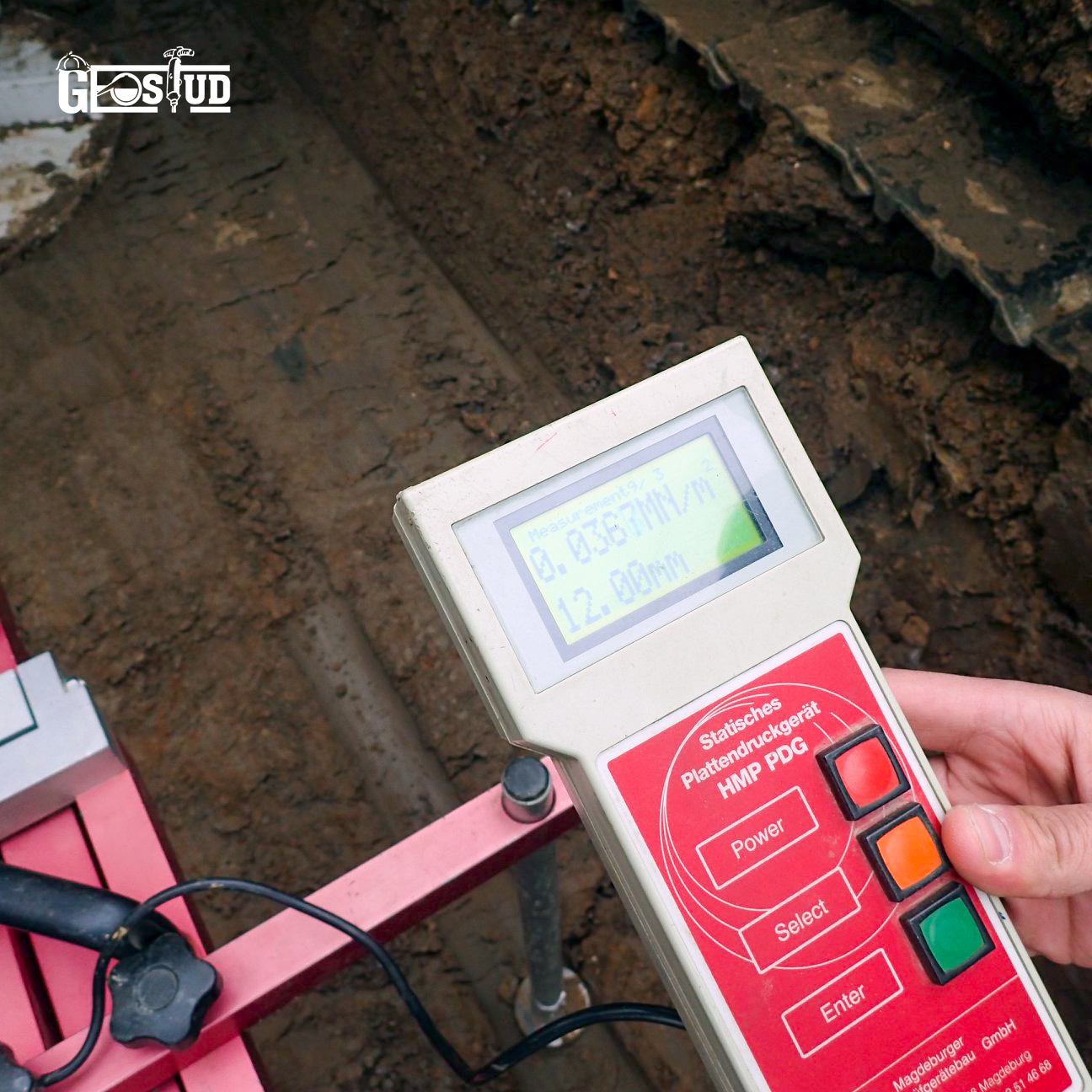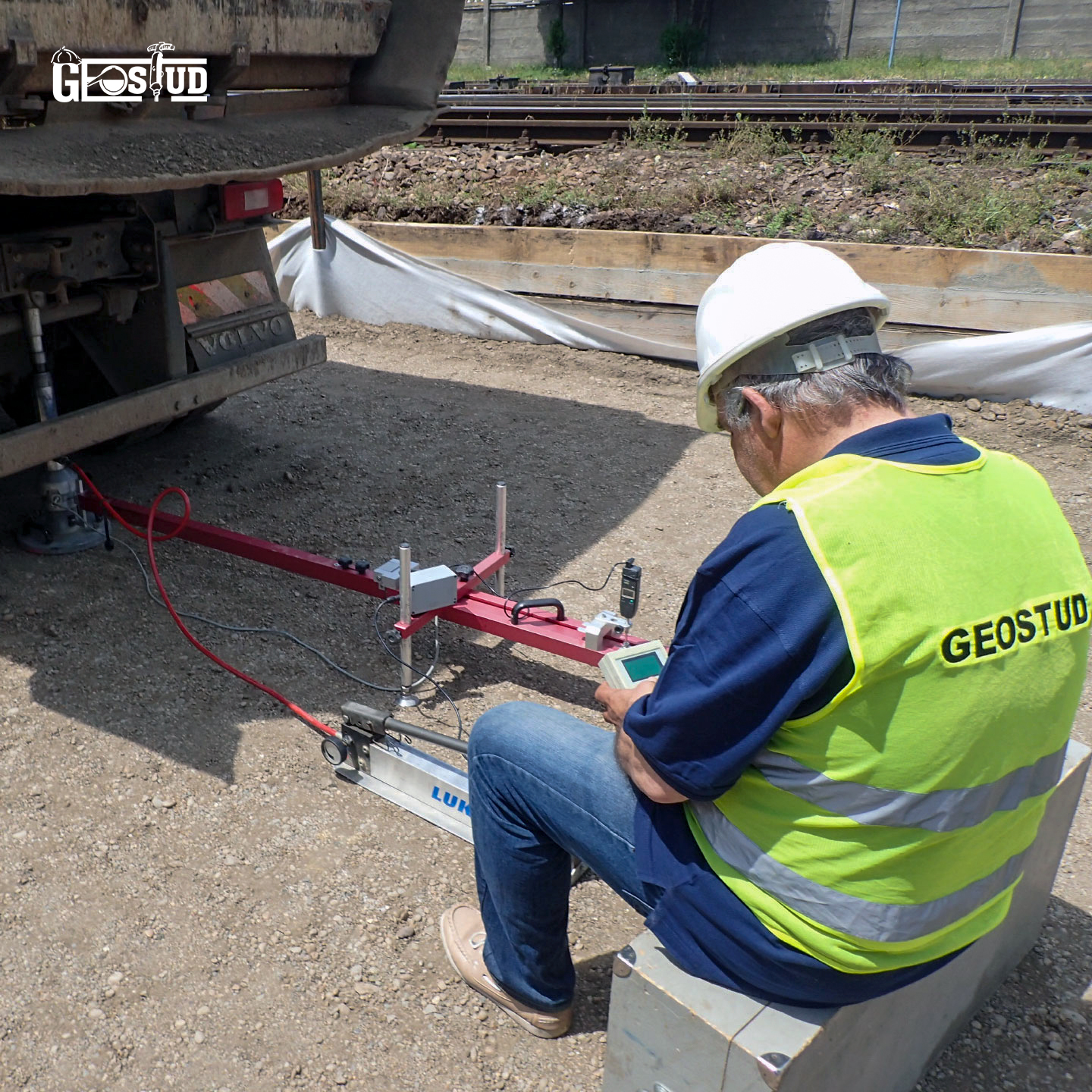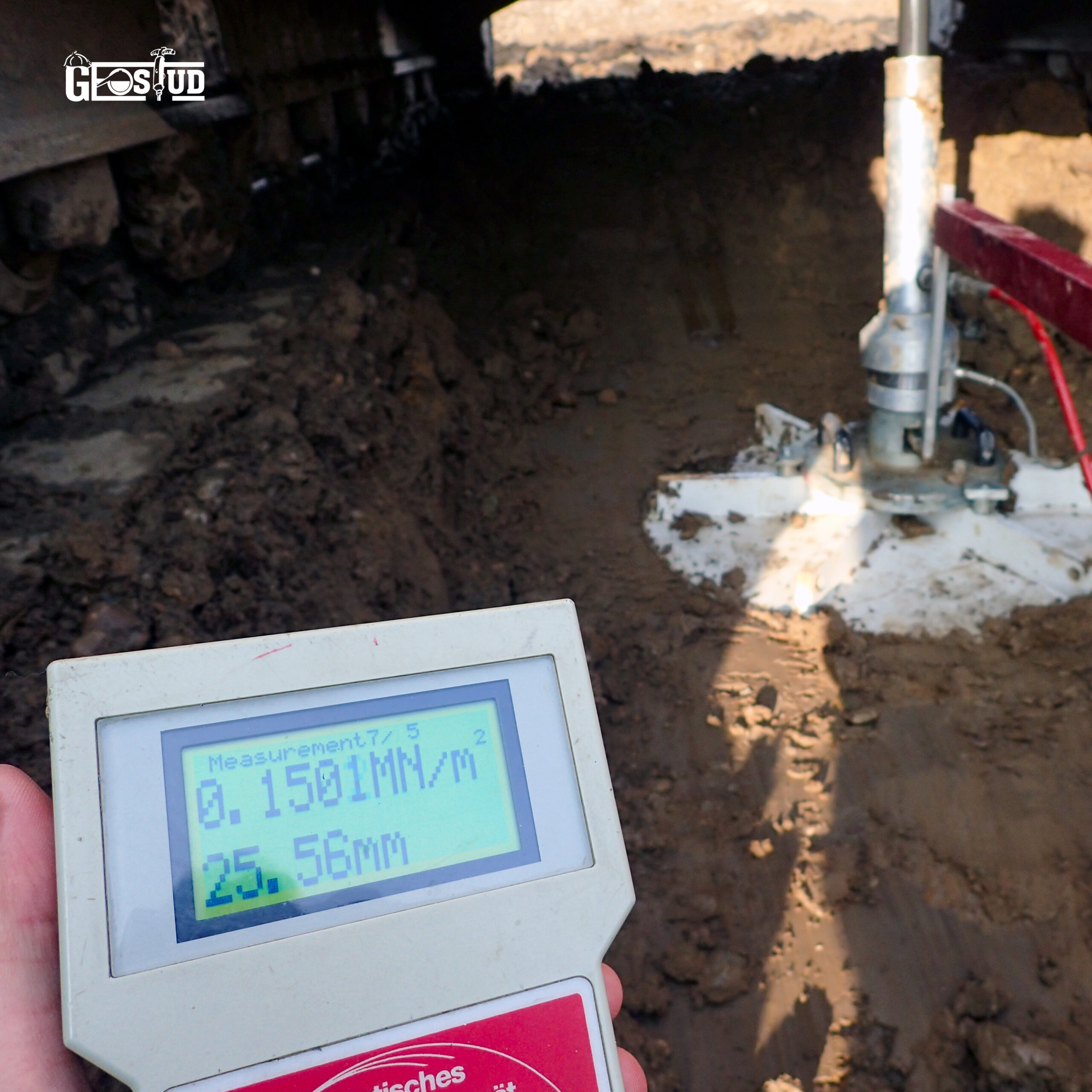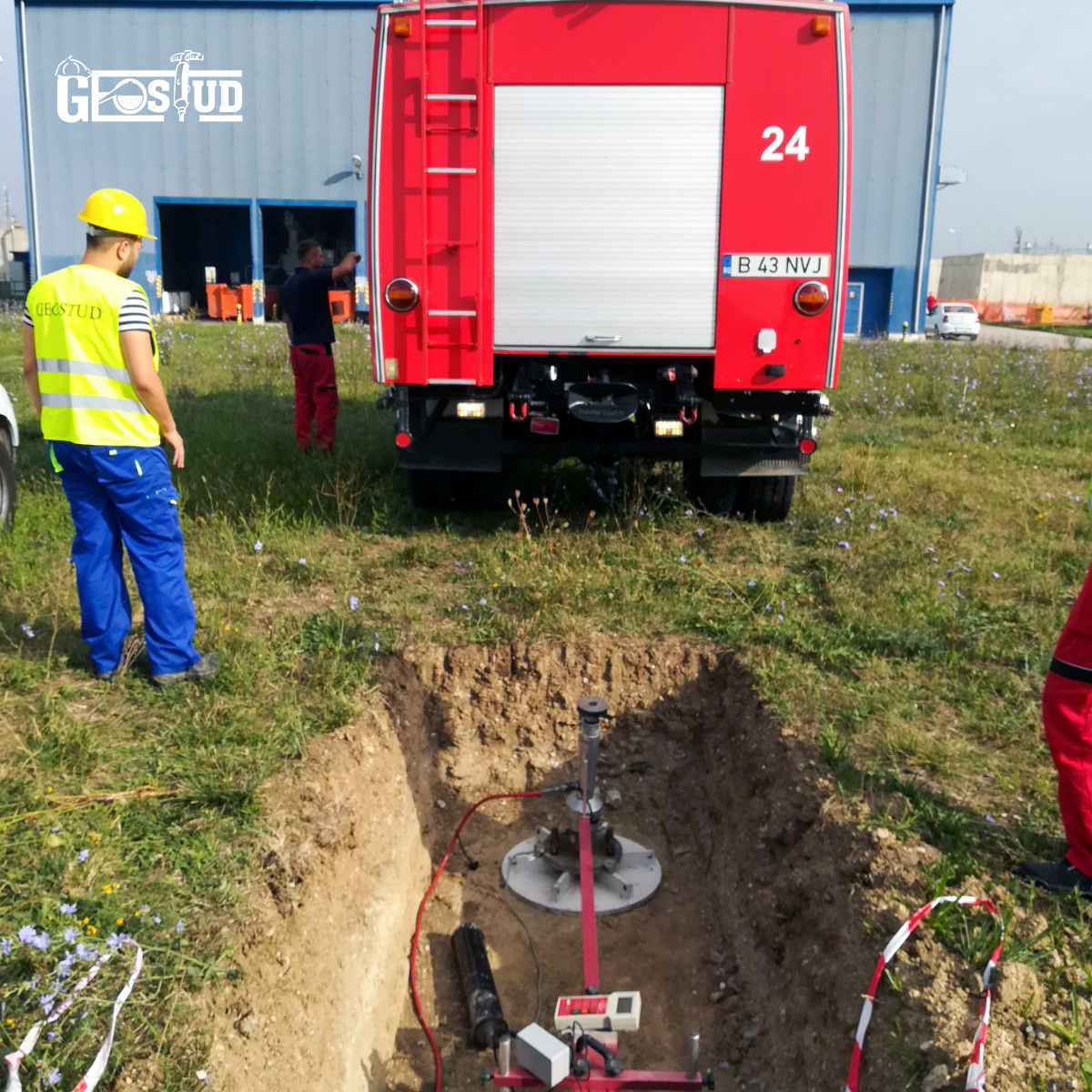Purpose of the test:
The static plate compression test is a control method that measures the settlement of the foundation soil under a rigid circular plate that is gradually loaded and unloaded, repeatedly, using a compression device (hydraulic press). The average normal stresses under the plate “σ” and the respective settlements “s” of each loading step are represented in a compression-settlement diagram.
Translation:
The Romanian text is accurate and easy to understand. The English translation is also accurate and preserves the meaning of the original text. It is also grammatically correct and easy to read.
Here is a possible alternative translation:
The purpose of the test is to measure the settlement of the foundation soil under a rigid circular plate that is gradually loaded and unloaded, repeatedly, using a compression device (hydraulic press). The average normal stresses under the plate “σ” and the respective settlements “s” of each loading step are represented in a compression-settlement diagram.


Conditions:
The static plate compression test can be performed on cohesive or non-cohesive soils. In some cases, the test can also be performed on improved soils (treated with various binders). However, it is necessary that boulders larger than about ¼ of the plate diameter are not directly under the plate.
In the case of very uniform sands that dry quickly, soils covered with crust or temporarily wetted at the surface, and soils disturbed in some other way in the surface area, the static plate compression test is carried out under the disturbed area.
In the case of clays, the static plate compression test can be performed and evaluated in optimal conditions only when they are in the “plastic consistent – hard” range. In the case where the soil moisture, which significantly affects the test results, may vary greatly in the influence area of the test, it will be determined under the surface of the measurement point, at different depths up to a depth of h = 2 x r (r = plate load radius). In the case where it is necessary for the test to be performed at a lower level than the ground level, in open boreholes, these are performed so that between the vertical walls and the edge of the plate there is at least 35 cm (for example, in the case of using a plate with a diameter of 300 mm, the open borehole will have dimensions of 100 x 100 cm).
Preparation of the measurement surface:
The measurement surface (on which the plate will be placed) will be prepared as smooth as possible with the help of a steel rule or trowel. Loose pieces of soil will be removed, and the plate will be placed in such a way that there are no air gaps at the contact with the ground. To level unevenness, a layer of a few millimeters thick of dry monogranular sand can be applied.
The method of placing the plate on the surface to be tested is adjusted by rotating the plate and by light blows on its surface. Also, the horizontality of the plate is checked with the help of a level.

Scope of application:
The static plate compression test can be performed on cohesive or non-cohesive soils. In some cases, the test can also be performed on improved soils (treated with various binders).
Execution of the test:
Preparation of the measurement surface:
The measurement surface will be prepared as smooth as possible with the help of a steel rule or trowel. Loose pieces of soil will be removed, and the plate will be placed in such a way that there are no air gaps at the contact with the ground. To level unevenness, a layer of a few millimeters thick of dry monogranular sand can be applied.
Execution of the test:
The plate is then loaded and unloaded in a series of steps, with each step lasting for a specified amount of time. The settlement of the plate is measured at each step.
Calculation of the results:
The results of the test are used to calculate the static modulus of deformation (Ev) and the reaction modulus (K0).
Summary:
The static plate compression test is a simple and effective method for determining the bearing capacity of soils. It can be used on a variety of soils, including cohesive and non-cohesive soils.

Execution of the test:
The plate is first loaded to a pressure of 0.01 MN/m2 (0.1 bar) for a period of approximately 30 seconds. The plate is then unloaded, and the microcomparator is set to zero.
Determination of the modulus of deformation:
For the determination of the modulus of deformation, the test is typically performed with a plate with a diameter of 300 mm. The load is then increased in steps until a maximum normal stress under the plate of σmax = 0.5 MN/m2 is reached.

Results:
The results of the test are represented in a compression-settlement diagram. From this diagram, the following can be determined and estimated:
- Static modulus of deformation (Ev)
- Reaction modulus (K0)
- Degree of compaction of the soil (D)


Applications:
The static plate compression test is used for:
- Evaluation of the bearing capacity of the foundation soil
- Evaluation of the compaction degree of the foundation soil
Conclusion:
The static plate compression test is a rapid and important method for verifying the bearing capacity of the foundation soil, which allows obtaining useful information for the design and execution of geotechnical works.
For more information, you can download: ANEXA 3 – Determinarea capacit !ii portante a terasamentelor
